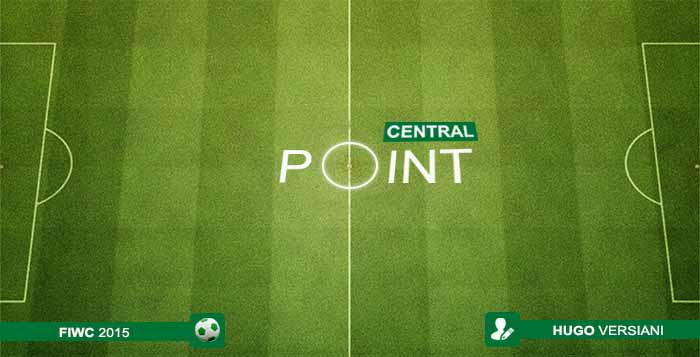CENTRAL POINT is the fortnightly column of FIFA U Team website, written by Hugo Versiani.
You will find here the most hot Ultimate Team topics but also old stuff, described in a very objective and special way.
In this sixth episode, “FIWC 2015: The World’s Biggest Videogame Tournament”, the author analyses the world’s biggest videogame tournament and shows that you can learn a lot with it.

FIWC 2015: The World’s Biggest Videogame Tournament
While EA release their fictional hero cards and insist on making us wait for information on the main TOTS releases, we’ll talk about the FIFA Interactive World Cup (FIWC) 2014-2015 final that happened this week in Munich, Germany.
If you want to go beyond the FUT off line/on line seasons division 1 and become eligible to be in this tournament or other virtual football-related ones, take a look at how the biggest video game competition in the world went down.
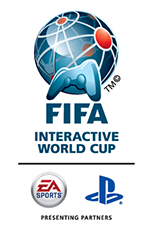
On line selections and presidential classificatory tournaments were performed, respectively, and players weren’t allowed to play more than ninety games on each stage until the next one came along. All games were performed on the PS4 platform. On the first stage sixteen spots were disputed in six phases, making the two best of each eligible and also the four best third-places. The second stage would classify three competitors, making a total of twenty players, being August Rosenmeier (winner of the previous edition) one of them. The great final was divided in four groups, with five competitors each and the two best would go on. Quarter-finals consisted of confronts between the first and second places of opposing groups. The semi-finals, just like the previous stage, had really rough and balanced games (see image 2). The final between Abdulaziz Alshehri and Julien Dassonville was far from usual, with a very significant goal difference as Ronaldo stood out.
Since we in the FIFAUTEAM community don’t like to be part of common sense, I decided to go beyond the show. Contrary to what many people think, we didn’t see the final disputes being played with the big European national teams. The semi-finals were Portugal x Brazil and Brazil x Argentina. The powerful favourite European nations were left out this time. Although Brazil didn’t even get third place, not even on virtual football, come on! In the final we had two exponents, CR7 and M10, the Portuguese as the lonely star of his team and the Argentinian playing along with his Europe-notorious hermanos. We won’t see the duel between Real Madrid and Barcelona in the UCL, which is something that would have marked history for the presence of the two best players in the world. But we did see and enjoy this face-off virtually on this week’s big event.
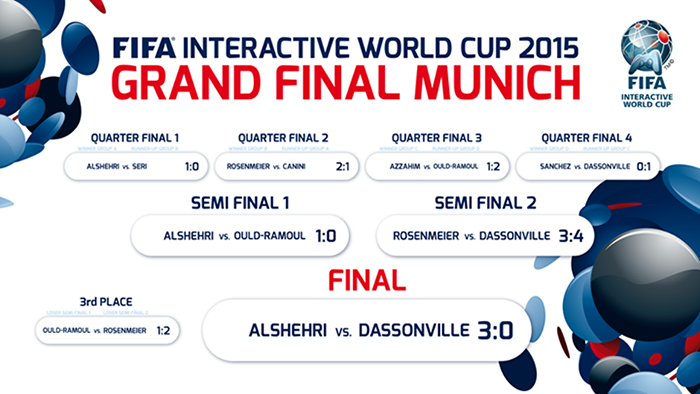
FIWC 2015 Table
Abdulaziz Alshehri, this year’s big winner, won a trip to the FIFA Ballon d’Or ceremony, although there’s the irony that he won’t see his main player in the tournament lift the trophy, since the Portuguese didn’t win the Liga BBVA, was eliminated from the Copa del Rei and Tévez, Morata and Pogba send their regards up from the UCL final. And yet, his biggest rival, M10, already won the national title and still has the chance to get all the other trophies, plus the South American cup is to come and maybe the FIFA Club World Championship. What a situation Ronaldo has gotten himself in! Last year the Argentinian took the award of best player in the Brazil World Cup, kind of a forced one in fact! Oh, and 20 thousand dollars were also part of the FIWC 14-15 reward.
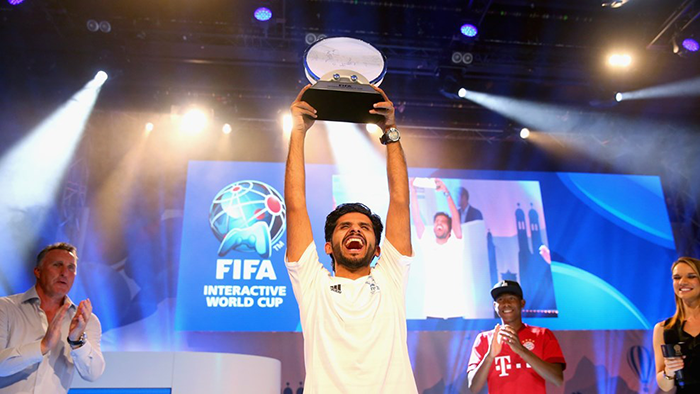
The FIWC 2015 Champion
And how can all this help you in FUT 15? FIWC didn’t know any better, but FIFAUTEAM was there for the big tournament final. During the transmission I did some annotations and now I present to you a FUT-related analysis regarding all that happened in this match, focusing on the champion’s performance. World ranking number 4, Alshehri arrived in the final with three victories and eight goals scored. His opponent, world ranking number 2 Dassonville also had three victories but one less goal scored. Although both players had declared preference to a formation with three defenders, none of them went for it on the big final (see image below).
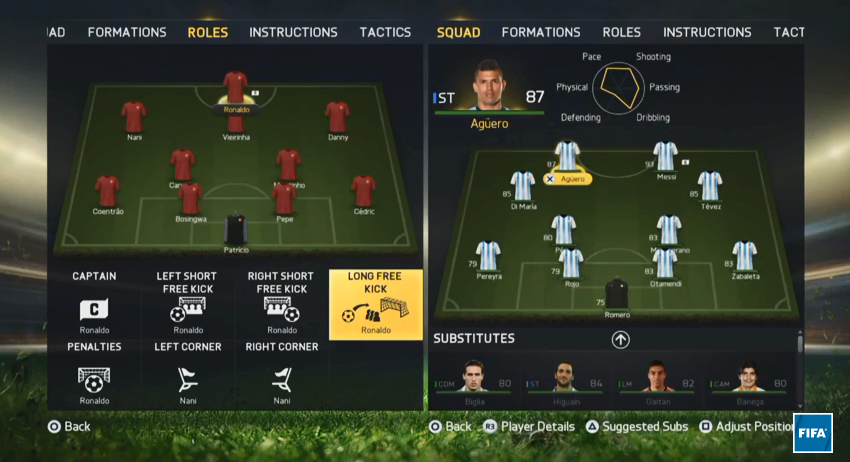
The teams’ tactics
In FUT, most players use formations based on four defenders. Although there’s this preference, like I’ve mentioned before, using a tactic with three defenders requires dominance towards this fundament, which I see as the most difficult one to be performed with excellence on FIFA. The difficulty when it comes to defending/marking is also a big issue for the best players in the world, what did make a difference for the 3×0 score to be built in the final were the unpredictable dribbling and assisting. Well, I only talked about one point of this final. If you want to combine fun to more victories on Ultimate Team, there are other considerations you might want to look at.
Portugal’s team analysis (Alshehri):
Formation: 4-5-1 (adapted)
This kind of tactics values both defending and attacking, proportioning balance between these sectors, and it’s all based on the dynamics of the midfield. The defensive system is composed by two centre-backs and two full-backs, while the first combat against the opposing attack is made by the two defending midfielders, which gives the forward players freedom to attack without worries. Notice that this guy placed Bosingwa out of his original position which is the right-back position. On the midfield, Moutinho (performing another role: CM-CDM) and Carvalho assist the defence, while Monaco is there as a first quality passing player option. Up ahead Nani and Danny had their original positions inverted so that CR7 is given priority to attack and get assisted. As a central attacking midfielder, Vieirinha also leaves his natural position to assist Ronaldo. In the end, it’s all designed to favour Cristiano Ronaldo’s remarkable finishes as he’s playing as an ST himself instead of LW.
Tactics: custom
Two interesting points to be analysed. The payers’ attributes aren’t near their maximum or minimum, it’s all organized for a bigger intervention by the player himself on his tactics. The other point is regarding the freedom all players have on the pitch and their movimentation, the well-organized system there is for going out the attack while there’s always someone covering in the defence, especially the full-backs. During the game the player doesn’t make use of pre-established tactics, but quick tactics combined with the customizations he made before the match.
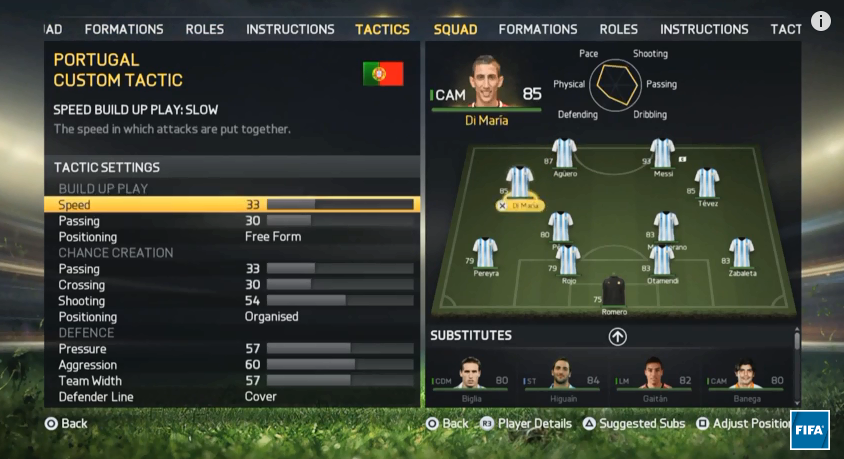
Portugal’s custom tactics
The game: 90 minutes of learning
Every time the opponent had possession, Alshehri would activate the offside line for his defence. That made long passes more difficult to work as assists for the fastest attackers (Messi and Aguero). The wingers, Nani and Danny, would help blocking the opposing attacks starting from the full-backs, that alongside the CDM’s to form a line of 4 players which gave Vieirinha and CR7 good possibilities for deadly counter-attacks. Possession, without random and desperate attacking attempts was also one of his patient play style’s characteristics. The use of the defenders’ strength was another frequent behaviour, it wasn’t only tackles. Something that we see often in FUT was used by the champion as well, corner kicks going for the near post with the use of corner quick tactics. Last year, on FIFA 14, corner set pieces were the hit, everyone wanted to do them. Do you remember? The two defending midfielders would always manage to quickly stop the opponent’s counter-attacks. Fast passing combined with dribbling in the direction of the goal is what made attacks unpredictable. If you think the first goal came out of a desperate run from the kickoff, forget about it! It was the result of CR7’s individual talent, dribbling and an unstoppable shot on the far post. Alternating playmaking possibilities through several sectors is another important lesson learned from this game. Concentrating your attacks in just one side of the pitch, sector or shape makes it easy to predict for the opposing defence. The second goal, again by CR7, didn’t come from countless long passing attempts for him to run desperately to the goal, he actually showed diversity as a striker to score with a header this time. Being 2 goals down they couldn’t remain the same, so Argentina changed their formation twice, from 4-4-2 to 4-1-2-1-2 and then to 3-5-2, but none of these changes affected the score. Contrary to what I see on FUT, both finalists didn’t abuse of 1-2 passes, but showed good positioning. And to make it official, a hat-trick by the Portuguese showing why he’s the best player on FIFA 15.
Argentina: missing
Messi, Aguero, Di Maria and Tévez haven’t been seen since the kickoff. The first country ever to be second place of the world twice in the same year. Adiós, hermanos!
It’s more than just fun, the entertainment also taught us something. The TOTS are coming and if you think you just have to get a full-blue squad, go search for another hobby! The fun is in dominating the fundaments and getting the most from each player. I know Portugal wouldn’t be my first or second choice for a world tournament final. And the FIWC 2015 champion showed us a perspective that could be applied to FUT.
